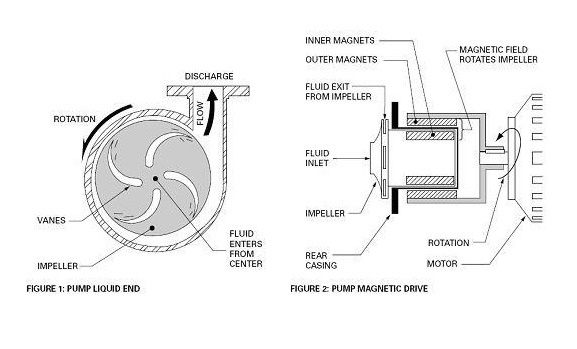Pumps are offered in a variety of styles. Maintenance necessitates the use of a pump. Pumps are typically used to power filtration systems in order to maintain water circulation within the pond. Each type of pump has its own set of applications and characteristics.
Do you know what the LPH and GPH are? These abbreviations are crucial when determining the effectiveness of pond pumps, so you should be aware of them. Apart from the abbreviations, you should also be familiar with the terms head height and head pressure.
Many pond keepers are finding useful information on fish pond pumps on the internet. There are numerous helpful websites online that can assist you in selecting the right pond pump for your landscape. You will discover more about pond pumps in this article.
Magnetic Drive Pump
Electromagnetism is used to rotate the impeller and force out the water in magnetic drive pumps, which are the most popular. This is a highly effective technique that can save a significant amount of energy. It’s also available in a variety of sizes to fit your pond perfectly. Although magnetic drive pumps are not as powerful as direct drive pumps, they are more efficient. They employ a magnetic impeller instead of an electric motor, and they’re perfect for waterfalls and streams with a slower water flow
Statuary Pump
This is an excellent pond ornament or little fountain; it has low head pressure and GPH; it can’t be used for filtration, thus it’s best for indoor display and patio fountains. Because they are used to power fountains, splitters, and other stand-alone decorative applications in your pond, statuary pumps are also known as fountain pumps.
Direct Drive
This is suitable for higher head heights since it employs electric motors to turn the impeller of the pump with the drive shaft. It takes more energy and is less expensive. This pump consumes more electricity and requires oil lubrication. Direct drive pumps are among the most powerful, and they’re typically found in ponds with enormous waterfalls and streams that require a lot of water flow
Submersible Pump
This pump can be submerged in the pond; this is important to prevent the pump from overheating because it will be running for 24 hours. Because the noise is muffled, outdoor activities will not be affected.
External Drive Pump
This is ideal for high head pressure and flow rates; it requires less maintenance but is more difficult to install. It is a little noisy and should be protected in the event of a power outage. External drive pumps must be installed outside of your pond, but they can be readily hidden amid the foliage or in a bigger water feature.
They can push a lot of water and are a wonderful choice.
Solid Handling Pump
This is likewise a submersible pump, but it’s made for ponds with a lot of detritus. It protects the impeller from harm and allows the water to flow despite the harsh conditions.
Fountain Pump
For tiny ponds or water gardens, this is a good option. It’s commonly sold as part of a set that includes a pre-filter, fountain, and water pump
Final Words
Magnetic drive pumps, as well as submersible pumps, have proven to be the most popular so far. Nonetheless, it is a matter of personal preference. Choosing the right pond pump can be difficult, especially if you’re new to the pond business. Because the pump is the heart of your water garden, you’ll want to be sure you get one that’s up to the task. It’s in charge of circulating water throughout your pond and keeping it clean in the end. It also delivers the relaxing sound of running water while aerating the water in your pond. Are you looking for the best MSW pumps, contact Price Pump today for all your pump related requirement.




























